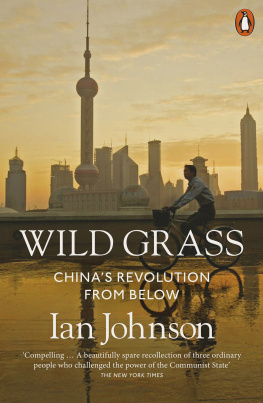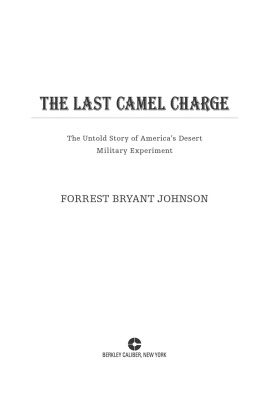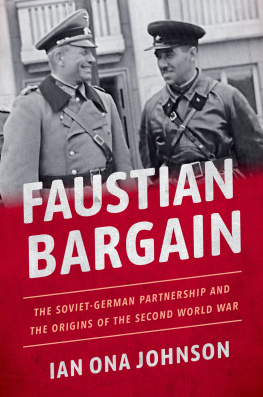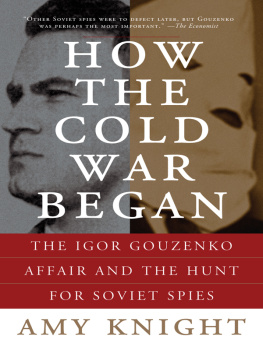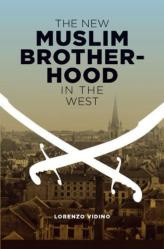Copyright 2010 by Ian Johnson
ALL RIGHTS RESERVED
For information about permission to reproduce selections from this book,
write to Permissions, Houghton Mifflin Harcourt Publishing Company,
215 Park Avenue South, New York, New York 10003.
www.hmhbooks.com
Library of Congress Cataloging-in-Publication Data
Johnson, Ian, date.
A mosque in Munich : Nazis, the CIA, and the Muslim
brotherhood in the West / Ian Johnson.
p. cm.
Includes bibliographical references and index.
ISBN 978-0-15-101418-7
1. Islam and politicsGermanyMunichHistory20th century.
2. MosquesGermanyMunichHistory20th century. 3. Jam'iyat al-Ikhwan
al-Muslimin (Egypt)History20th century. 4. Islamic fundamentalism
GermanyMunichHistory20th century. 5. World War, 1939-1945
Participation, Muslim. 6. Ex-NazisGermanyMunichHistory20th cen
tury. 7. Mende, Gerhard von, 1904 8. Cold War. 9. United States. Central
Intelligence AgencyHistory20th century. 10. Anti-communist move
mentsGermanyMunichHistory20th century. I. Title.
BP 65. G 3 J 64 2010
297.30943'6409045dc22 2009035285
Book design by Brian Moore
Printed in the United States of America
DOC 10 9 8 7 6 5 4 3 2 1
"Ginkgo Biloba" from West-Eastern Divan by Johann Wolfgang von Goethe.
Translated by Jacques-E. Fortin in "The Armored Key" by Monique Gaudry
and published online at http://archange.tripod.com/thearmoredkey123.html.
Used by permission from Pierre Fortin.
And there are those who built a mosque from mischievous
motives, to spread unbelief and disunite the faithful.
Koran 9:107
I N 1947, M ARGARET D OLLINGER went for a swim in the Isar, the Alps-fed river that runs through Munich. There she saw a bronzed, vaguely Asian-looking man. He was Hassan Kassajep, a thirty-year-old Soviet refugee hoping to start a new life. The two looked at each other shyly. "I knew he was the man," she said. They parted only at his death, one year shy of their golden wedding anniversary.
This book is dedicated to the Kassajeps and other Muslim migrs who fought this obscure war. Many of them faced impossible moral choices and ended up thousands of miles away from home, living in countries they didn't really understand, hoping that their work would change history. It did, but in ways that they couldn't have expected.
This is a common refrain in historythe story of unintended consequences. But in this case I felt a special poignancy. I came to know these people intimately through their letters, photos, and, in some lucky cases, through meeting people like Margaret Kassajep in personaged survivors of another era. I was also struck by the sadness of a life lived in secret. These people could rarely talk openly about what they had done. Sometimes it was because they were embarrassed by their actionscollaborating with an odious regime, for example, or betraying friends. At other times they felt bound by a code of silence, either directly imposed or implicitly understood in covert operations. Most had constructed an alternate reality: that of the scholar or the freedom fighter, the religious activist or the businessman. I wondered what remains of a life when it is stripped of a public identity.
In the case of the people in this book, the answer is, a lot. Though most of them are dead and their life stories obscure until now, their actions reverberate today as we confront similar issues. Like light refracted from a distant planet, they illuminate our own lives.
Berlin
April 2009
CAST OF CHARACTERS
The Main Actors
ROBERT H. DREHER: CIA agent working in Munich for a front organization, the American Committee for Liberation (Amcomlib). Backed the Muslim Brotherhood.
GERHARD VON MENDE: Turkic studies expert who pioneered the use of Muslims against the Soviets in the Nazi era; ran a similar intelligence bureau after the war in West Germany.
SAID RAMADAN: Exiled senior leader of the Muslim Brotherhood, with close ties to Western intelligence. Led Islamists in the battle to seize control of the Munich mosque project.
Other major players, grouped by their primary allegiance:
The Americans
IBRAHIM GACAOGLU: Feisty Muslim leader; served the Germans during World War II but later accepted U.S. aid.
AHMAD KAMAL: California author and Muslim activist who cooperated with U.S. intelligence but ran a rogue operation in Munich.
ROBERT F. KELLEY: Head of Amcomlib's Munich operations.
B. ERIC KUNIHOLM: Amcomlib's political director in New York headquarters; strong backer of using Muslims against the Soviet Union.
RUSI NASAR: Uzbek activist supported by Amcomlib and other agencies in anti-Soviet activities.
SAID SHAMIL: North Caucasian leader close to U.S. intelligence; worked closely with Dreher.
GARIP SULTAN: Worked for von Mende during World War II and immediately afterward; later worked for Amcomlib.
The Germans
BAYMIRZA HAYIT: Uzbek historian and von Mende's right-hand man.
ALI KANTEMIR: Dagestani leader, loyal to von Mende.
HASSAN KASSAJEP: Secretary of Mosque Construction Commission; tried to mediate between ex-soldiers and students.
VELI KAYUM: Self-styled "Khan" of the Uzbeks; mercurial and unreliable.
NURREDIN NAMANGANI: Uzbek imam of an SS division; later employed by von Mende to take control of Munich's Muslims.
The Muslim Brotherhood
MAHDI AKEF: Current "supreme guide" of the Muslim Brotherhood; headed the Munich mosque for three years.
GHALEB HIMMAT: Syrian businessman and head of the Munich mosque for thirty years; lives near Nada in the Italian Alps.
HAJ AMIN AL-HUSSAINI: Former Grand Mufti of Jerusalem; worked with von Mende and the Nazis during the war and with Ramadan afterward.
YOUSSEF NADA: Egyptian businessman who helped arrange financing for the Munich mosque; helped set up the Brotherhood in the United States.
YOUSSEF QARADAWI: One of the most influential spiritual figures in the Muslim Brotherhood today; helped rebuild the Brotherhood in the 1970s by focusing on the West.
IBRAHIM EL-ZAYAT: Took control of the Munich mosque association from Himmat after the 9/11 attacks.
PROLOGUE
On the Edge of Town
I N THE WINTER OF 2003, I was browsing in a London bookstore that sold radical Islamic literature. It was the sort of store that had earned London the nickname "Londonistan": stacked with screeds calling for the downfall of free societies, it tested the limits of free speechand unwittingly catalogued the troubles plaguing Europe's Muslim communities. I was a regular customer.
Wandering the aisles, I noticed a peculiar map of the world. Countries were color-coded according to percentage of Muslim population. Dark green countries had a Muslim majority; light green, yellow, and beige represented decreasing proportions of Muslimsa typical example of political Islam, which divides the world into us and them, the only criterion being religion. Famous mosques decorated the edge of the mapthe Grand Mosque in Mecca (the yearly destination of millions of pilgrims), the Dome of the Rock in Jerusalem (where Muhammad ascended to heaven), the wondrous Blue Mosque of Istanbuland the Islamic Center of Munich.
The Islamic Center of Munich? That seemed odd. I had been writing on religion in Europe and other parts of the world for half a dozen years, and had lived in Germany even longer. I had heard of the mosque as the headquarters of one of Germany's smaller Islamic organizations. But the mosque hardly belonged in such august company. Munich was no center of Islam, and the mosque wasn't the biggest in Germany, let alone Europe. Still, it was immortalized in someone's pantheon. I was planning a visit to Munich and decided to find out why.
Next page

